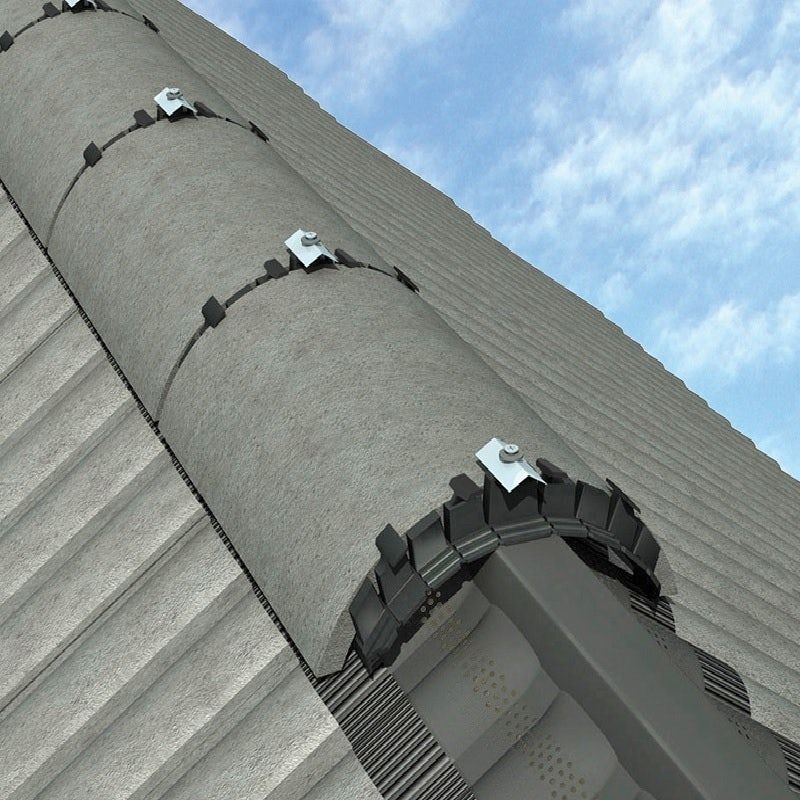Derby Architecture
Use Latest Technology To Save Cost and Improve Roofing Lifespan
Derby is a city located in Derbyshire, England. It lies on the banks of the River Derwent and is home to a population of around 248,700 people. The city has a long and rich history, dating back to the Roman times when it was known as Darioritum. Derby later became an important centre for the wool trade during the Middle Ages, and more recently has become known for its engineering and manufacturing industries.
One of the most notable features of Derby's architecture is Derby Cathedral, which was built in the 12th century. The cathedral is home to a number of interesting architectural features, including a set of 28 misericords (wooden seats with carved designs) which date back to the 14th century.
Derby also has a number of other historic buildings and structures, including the Grade I listed St Peter's Church, which was built in the 11th century, and Derby Castle, which was built in the 12th century.
The city is also home to a number of museums and art galleries, including the Derbyshire County Museum and the Derby Art Gallery.
Derby is a great city to explore if you're interested in architecture and history. There are a number of walking tours available which will take you around some of the most notable buildings and structures in the city. Alternatively, you can simply wander around and take in the sights at your own pace. Either way, you're sure to find plenty of interesting things to see and do in Derby.
So, what are you waiting for? Start planning your trip to Derby today!

Types Of Architecture In Derby Uk
There are many different types of architecture to be found in Derby, UK. From mediaeval buildings and churches to more modern structures, there is something to suit everyone's taste. Here are just a few of the most popular types of architecture you can find in Derby:
- Mediaeval Architecture: Derby Cathedral is a prime example of mediaeval architecture in the city. This Gothic building dates back to the 13th century and is one of the finest examples of its kind in the UK. Other notable mediaeval buildings in Derby include St Werburgh's Church and All Saints' Church.
- Georgian Architecture: The Georgians were known for their love of symmetry and grandeur, and this is reflected in the architecture of their era. Many of the finest Georgian buildings in Derby can be found on Friar Gate, including the Assembly Rooms and the Derbyshire County Hospital.
- Victorian Architecture: The Victorians were a very productive bunch and left their mark on Derby in the form of many fine buildings. The most notable examples include the Midland Railway Station, the Albert Hall, and St Mary's Church.
- Modern Architecture: Derby is home to some excellent examples of modern architecture, such as the Quadrant Shopping Centre and the Silk Mill.
- Build of Historical Interest: Derby is home to a number of buildings of historical interest, including the Grade I listed St Werburgh's Church and the Grade II listed Derby Cathedral.
- Derby is home to a number of interesting and significant architectural buildings. These include the Midland Railway Station, the Albert Hall, St Mary's Church, the Quadrant Shopping Centre, the Silk Mill, St Werburgh's Church and Derby Cathedral.
Sterling Examples Of The Architecture In Derby UK
- The architecture in Derby, UK is used for a variety of purposes.
- The Quadrant Shopping Centre is one of the most popular shopping destinations in Derby, UK. The Silk Mill is also a popular shopping destination.
- The Midland Railway Station is a major train station in Derby, UK. It is used by many people who travel to and from Derby on a daily basis.
- The Albert Hall is a popular events venue in Derby, UK. It is often used for concerts, plays, and other live performances.
- St Werburgh's Church and Derby Cathedral are both significant religious buildings in Derby, UK. They are both used for religious services and events.
- The University of Derby is the largest university in Derby, UK. It is a popular destination for students from all over the world.
- The Derby Museum and Art Gallery is a popular tourist destination in Derby, UK. It is home to many paintings, sculptures, and other works of art.
Difference Between Derby Architectural Buildings From Other Buildings In UK
- The buildings in Derby, UK are generally taller than those in other parts of the UK.
- The buildings in Derby, UK are generally more ornate than those in other parts of the UK.
- The buildings in Derby, UK are generally made of stone or brick, while those in other parts of the UK are typically made of wood.
- As the capital of Derbyshire, Derby is home to a number of important architectural buildings. These include:
- The Cathedral of All Saints, which is the largest cathedral in England and dates back to the 12th century.
- Derby Castle, which was built in the 11th century and is one of the most important castles in England.
- The Guildhall, which is a 14th century building that houses the city's courtrooms.
- The Old Courthouse, which is an 18th century building that now serves as a museum.
There are also a number of smaller, but still notable, architectural buildings in Derby. These include:
- The Assembly Rooms, which were built in 1771 and are now used as a conference centre.
- The Silk Mill, which is the world's oldest working factory and dates back to 1721.
- Queen's Hall, which is a Victorian concert hall that was built in 1879.
- Derby Cathedral, which is a Gothic Revival cathedral that was completed in 1856.
- The Midland Railway Works, which were built in 1839 and are now home to a number of businesses.
- The Albert Hall, which is a music venue that was built in 1867.
- The Guildhall, which is a historic building that now houses the Derby Visitor Information Centre.
Above are just some of the notable architectural buildings in Derby. There are many more to see and enjoy throughout the city.
More Thoughts
Derby has a variety of different architectures, from ancient to modern. This can be seen as a pro or a con, depending on your perspective. Some people may find the variety to be exciting and interesting, while others may find it confusing and overwhelming.
One of the pros of the architecture in Derby is that it provides a sense of history. The city has been around for centuries, and this is reflected in its buildings. Many of the structures have been standing for hundreds of years, and they provide a glimpse into the past.
Another positive aspect of Derby's architecture is that it is very diverse. There are buildings from many different periods and styles, so there is something for everyone to enjoy. Whether you prefer Gothic cathedrals or Victorian townhouses, you'll be able to find it in Derby.
One of the downsides of the architecture in Derby is that it can be difficult to navigate. The city is full of narrow streets and winding alleyways, so it can be easy to get lost. If you're not familiar with the area, it's best to stick to the main roads.
Another negative aspect of the city's architecture is that it can be quite dirty. Due to the high number of tourists, there is a lot of litter and graffiti. This can take away from the beauty of the buildings.
Overall, the architecture of Derby is both positive and negative. It provides a sense of history and diversity, but it can also be difficult to navigate and quite dirty.
General Architecture Of The United Kingdom
The United Kingdom has a varied and rich architectural heritage, with buildings ranging from the prehistoric to the contemporary.
The earliest examples of architecture in the UK are Roman, most notably Hadrian's Wall and associated forts, built during the occupation of Britain by the Roman Empire. These are often considered some of the finest examples of military engineering in the world.
Many mediaeval castles can be found across the UK, built by powerful nobles and kings as both residences and fortifications. Many of these castles were later developed into grand country houses during the Renaissance and Georgian periods.
During the Industrial Revolution, Britain saw a rapid growth in urbanisation and the rise of new towns and cities. This led to a need for improved infrastructure, including canals and railways, which were built by early civil engineering pioneers.
In the 20th century, Britain continued to develop its infrastructure, with notable achievements including the building of the London Underground, the opening of the Forth Bridge, and the construction of Heathrow Airport. More recently, projects such as the Channel Tunnel and the Millennium Dome have demonstrated Britain's engineering prowess on a global stage.
Roofing Contractor Near Me - Our Roofing Capabilities
Special Architecture Of Derby For Notable Buildings
- The Assembly Rooms, Derby. The Assembly Rooms are a set of historic buildings that were built in the 1780s. They now house a theatre, cinema, and other attractions.
- The Pickford's House Museum is a good place to start your tour of the architecture of Derby. It is located in the city centre and is easy to find. The museum is dedicated to the life and work of architect Joseph Pickford. It contains many original drawings and models of his buildings.
- The Cathedral of All Saints is another must-see for anyone interested in the architecture of Derby. It is the largest cathedral in England and dates back to the 12th century. The building is massive and very impressive. Be sure to take a look at the beautiful stained glass windows. This Gothic building was designed by Augustus Welby Pugin and is one of the most important examples of his work. The Cathedral is also home to the world's largest collection of Pugin furniture.
- For something a little different, check out the Derbyshire County Council Headquarters. This building was designed by Sir Edwin Lutyens and is considered to be one of his finest works. The building is made from Portland stone and has an interesting design.
- If you are interested in modern architecture, Derby has plenty to offer as well. The Assembly Rooms are a good place to start. This building was designed by Sir Norman Foster and opened in 2009. It is one of the most iconic buildings in Derby and has won numerous awards.
- Another must-see for anyone interested in the architecture of Derby is the Strutt's North Mill. This mill was built in 1786 and is now a museum. It is one of the best-preserved examples of an early industrial building in the UK.
- The Guildhall is a historic building that now houses the city council. It was built in the 14th century and has a beautiful timber frame.
- St. Mary's Church. St. Mary's Church is another Gothic building, located in the centre of Derby. It has a large spire and is one of the tallest churches in the area.
- The Old Courthouse. The Old Courthouse is a Grade I listed building that was built in the 18th century. It now houses the Derby Heritage Centre.
Finally, no trip to Derby would be complete without a visit to the Cathedral. This building dates back to the 12th century and is one of the most important historical buildings in the city.
As you can see, there is plenty to see and do in Derby if you are interested in architecture. Whether you want to see historic buildings or modern marvels, Derby has something to offer.
Contact Your Local Roofer In Derby - Very Competitive Offer
If you would like our Derby Roofers to prepare a free quotation for a dry ridge system Installation at your home or business, then give us a call.


